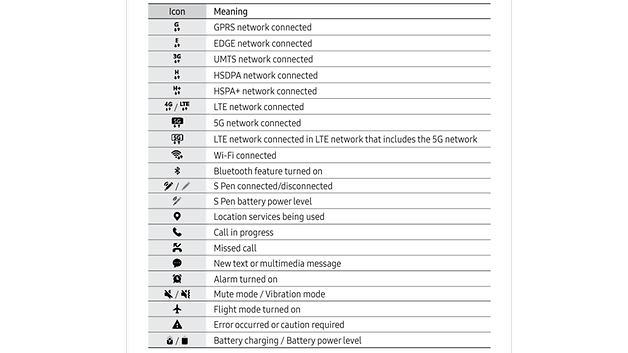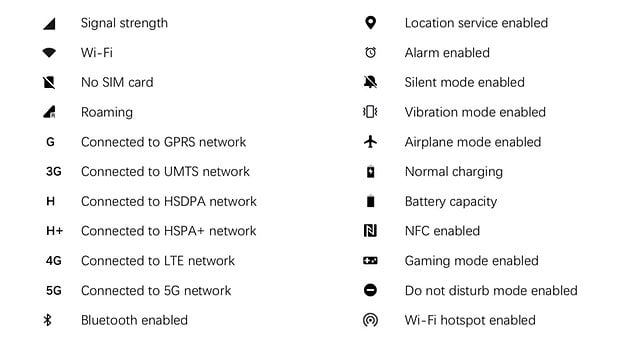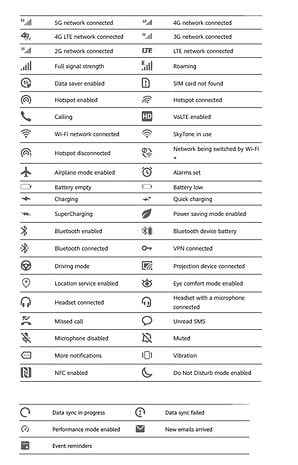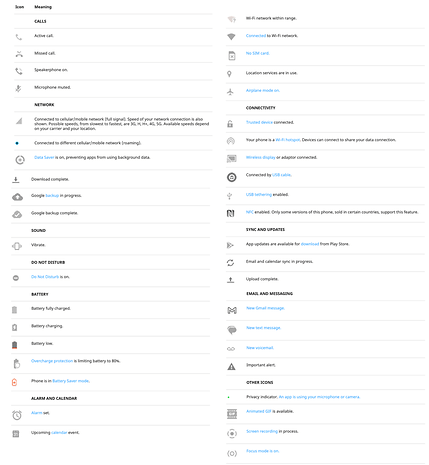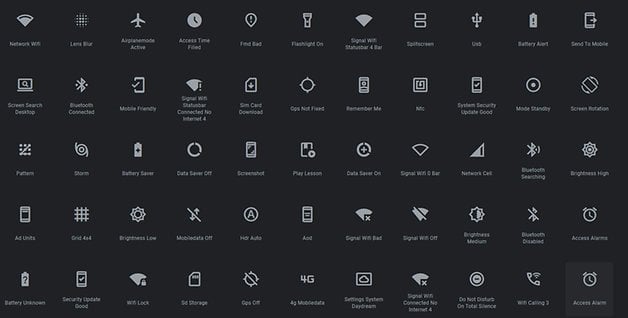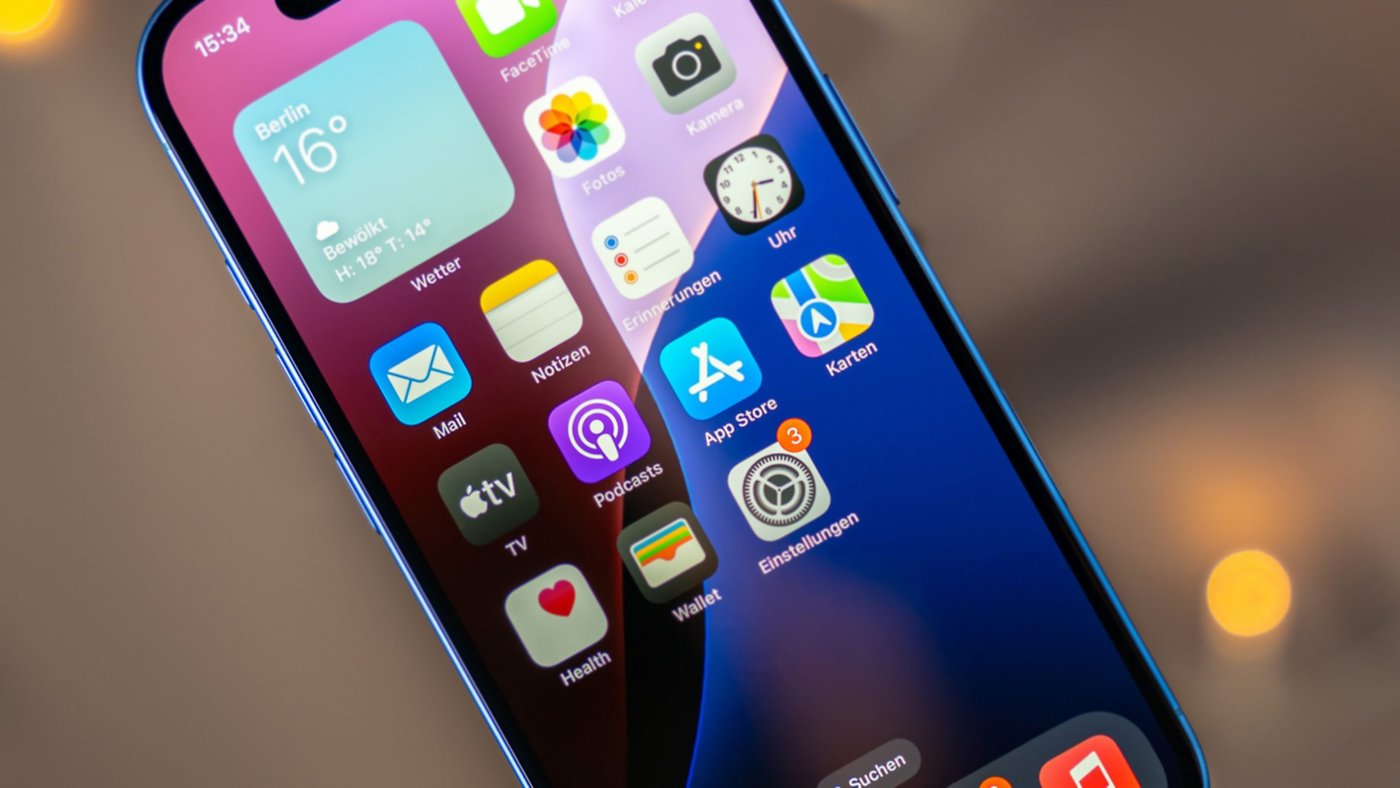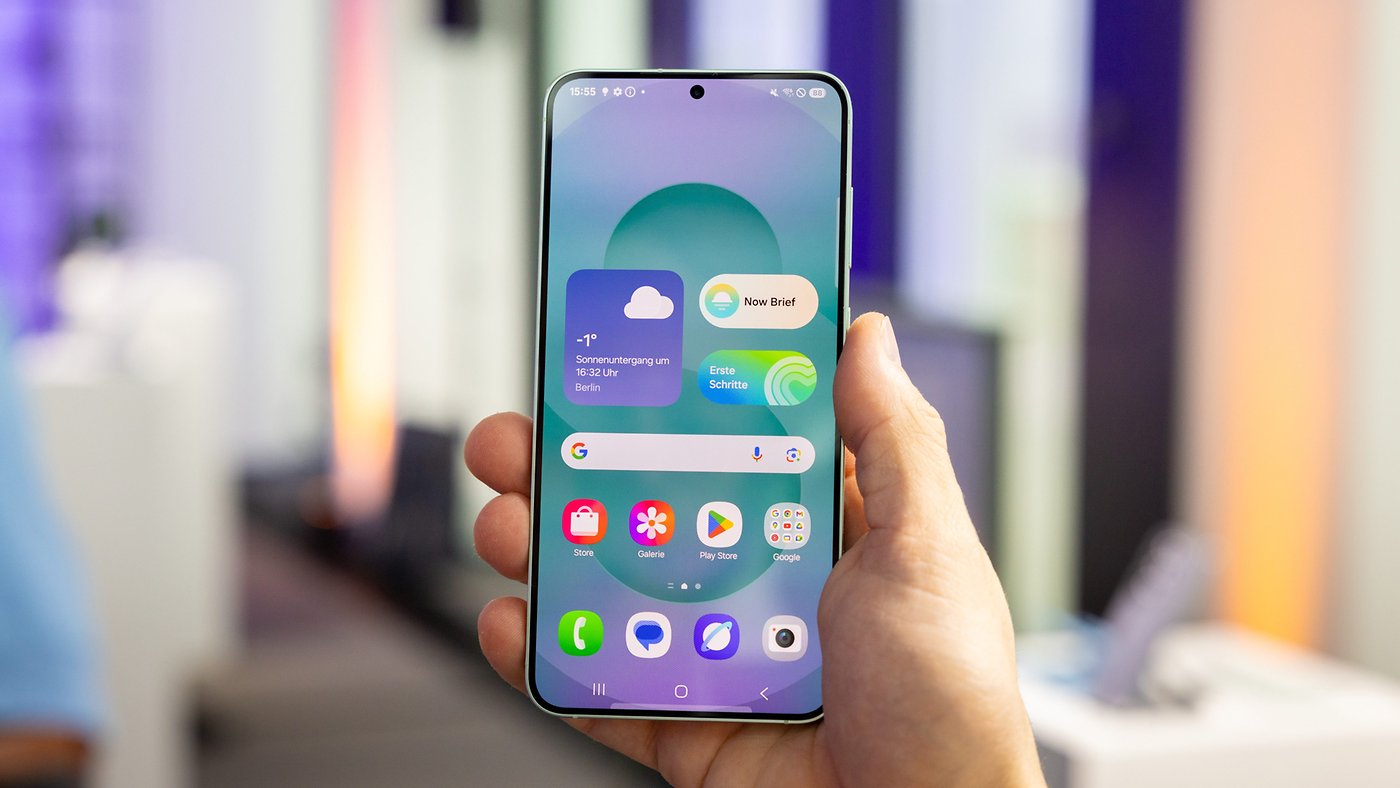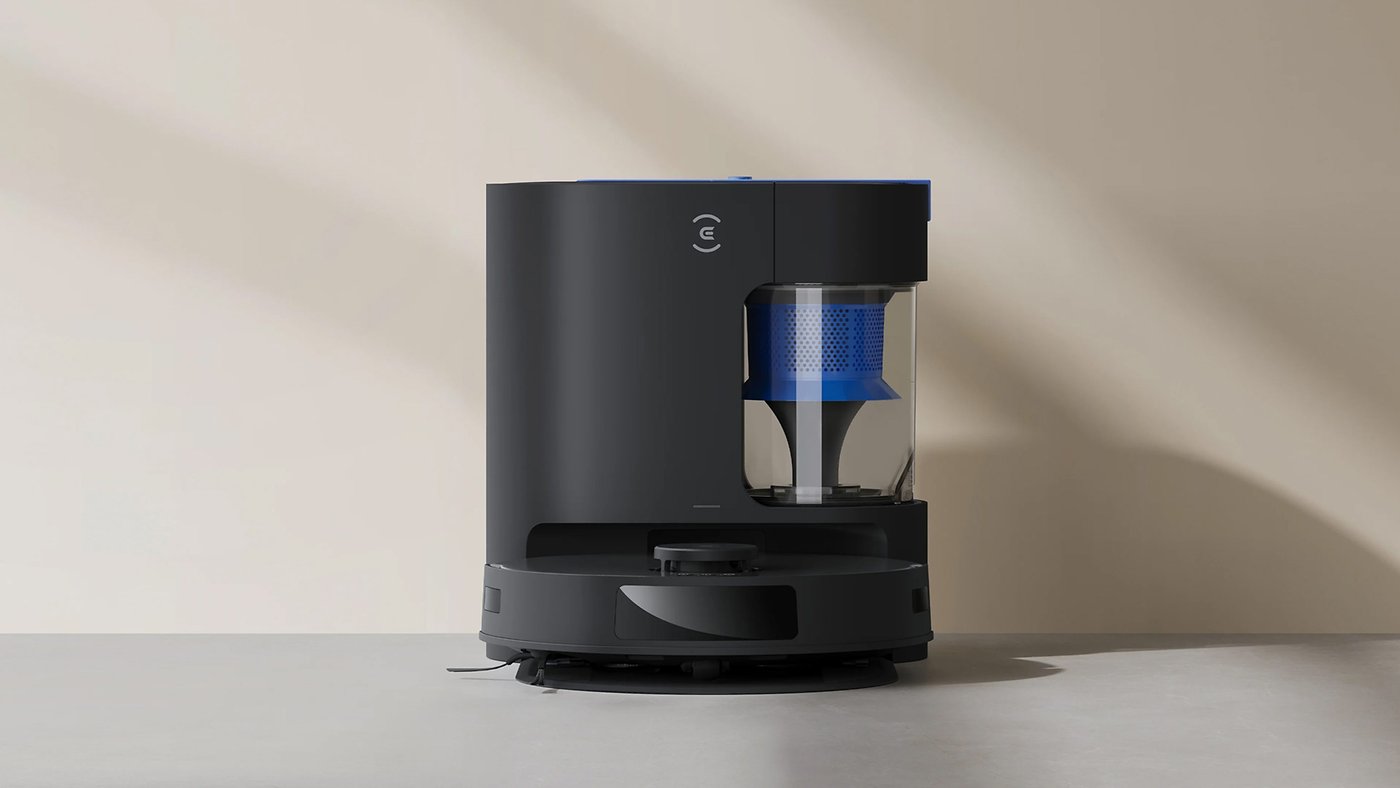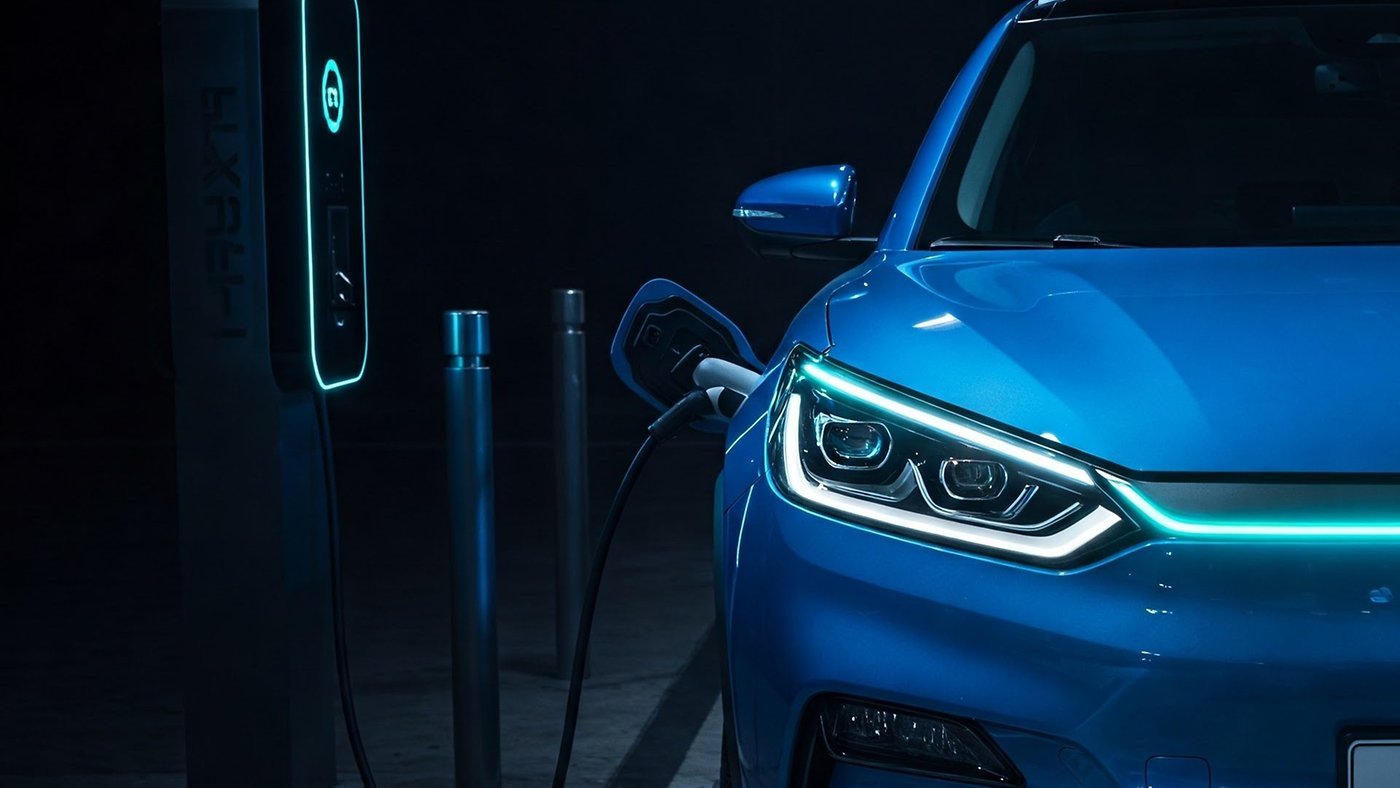
Because Android smartphone makers customize the user interface on their devices, even the most commonly used icons may differ from one brand to another. Also, chances are high you are reading this article because you are confused about a specific icon on your smartphone that you can’t make sense of.
To quickly check what it might be, you can use the jump to links to quickly see if the icon in question has been listed. If the icon you’re looking for isn’t listed on your smartphone’s manual, chances are high you will find them on Google’s font page anyway.
Knowing what’s status bar, notification bar, and quick settings
Before diving to those glyph icons, it is appropriate knowing what’s the difference between the status bar and notifications bar on your Android system since those icons will be shown and grouped depending on their type.

Status bar
The status bar and the notification bar are very similar, but in reality, they are two different things. The status bar is located at the top-right of the display. This is where you will see things like the current time, battery status, and current connections. See the usual list of status icons you can find on the status bar:
- Battery and charging
- Connectivity (WLAN, NFC, Bluetooth, cellular, etc.)
- Location services (GPS)
- Profiles (ring, silent, etc.)
- Modes (gaming, do not disturb or DND, etc.)
Notification bar
The Notification bar, on the other hand, is located on the upper left side, where you’ll find app icons to alert you to new messages, updates to the Play Store, current tracks being played, and other notifications.
- Messages and emails (SMS, messaging apps, etc.)
- Call logs
- Notifications from apps
- Clock, date, and alarms
- Tools (flashlight, recorder, and more)
- Active media being played (songs, videos, and recordings)
The notification bar also contains notifications, which you can open with a swipe-down gesture. This gesture reveals a lot of information – the example of which includes recent screenshots, a WhatsApp message, Facebook notifications, and email alerts.
Quick Settings
In addition to the notification bar, another set of important things you can access from this swipe-down gesture are the quick settings toggles. From here, you can quickly turn on/off a feature without having to go to the settings menu.
Some of the most common things you can change from here include enabling and disabling Wi-Fi, Bluetooth, and other connections, turning on/off the hotspot, toggling the auto-rotate option, and switching on the flashlight. If you press and hold down an icon, you will enter the settings for this function.
- Connectivity toggles
- Tool shortcuts
- Modes
- Brightness slider
- Profiles
- SIM manager
- Controllers
Most manufacturers also customize the quick settings themselves. Therefore, there are always several options here. Fortunately, the selection can be personalized to your tastes and habits, so you always have access to the most essential settings for you.
Also, you can always disable annoying or uninteresting notifications just by long-pressing an alert. This will open a small menu where you can choose how you want to be notified by the app.
Most common notification and status icons by manufacturers
Below, we take a look at some of the most commonly used notification and status icons that you may come across while using your smartphone. We have listed most of the prominent smartphone brands and their custom Android skins below. Whilst these customizations don’t fundamentally change the way the status and notification icons look or react, you can often find options that are exclusive to the software you are running.
Samsung (One UI)
Samsung’s user manual includes a list of symbols that are usually displayed on the notification bar on Galaxy smartphones and tablets. Check the image below to see the most important ones.
Xiaomi/ Redmi/ Poco
Here are the most commonly used status icons on Xiaomi smartphones. These icons will be seen on almost all devices from the company that run HyperOS (how to customize). This includes sub-brands like Poco and Redmi as well.
OnePlus / Oppo
These are the icons you will encounter while using OnePlus or Oppo smartphones that run the company’s own Android skin operating system – ColorOS.
Huawei / Honor (HarmonyOS, EMUI, and MagicUI)
Honor might have separated from Huawei, but many of the status and notifications on Honor devices that run MagicUI are inspired by Huawei’s HarmonyOS.
Motorola (Stock Android)
As for Motorola devices, they run on stock Android, but there are a few touches on how the glyph icons on their status bar appear when compared to other devices that run on pure Android OS.
Stock Android (for Google, Nokia/HMD, Sony, and Asus smartphones)
If you happen to be an Android purist who prefers the stock Android experience, chances are high you would own either a Google Pixel smartphone or one of the many devices that offer the stock Android experience. The brands that offer the stock Android experience to users include Google, Nokia/HMD, Sony, and even Asus.
Some of the icons that you will encounter on stock Android are listed in the image below. While these icons are from Android 11, most of these have remained unchanged on the latest version of Android.
In case the icon that you are looking for isn’t listed above, Google has a comprehensive list of icons that are part of Android 11 on its Fonts portal. This page lists all the icons that you will encounter on your Android phone. It is divided into multiple sections, some of which are listed below.
Have you ever seen a notification or an icon that you just can’t figure out the meaning of? Describe it in the comments, and let us know what type of phone you have!



